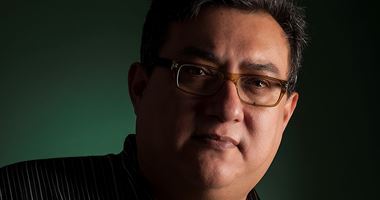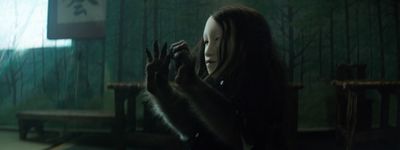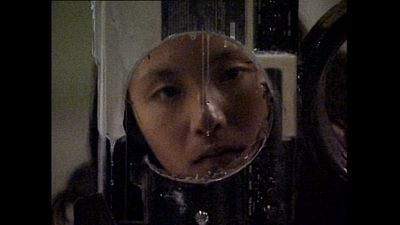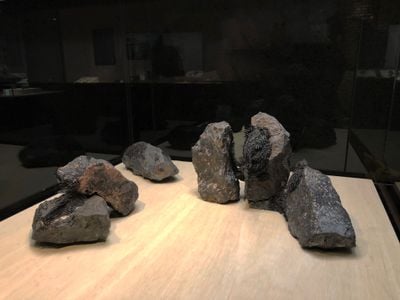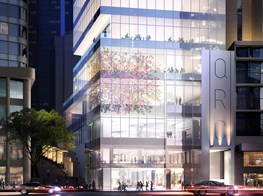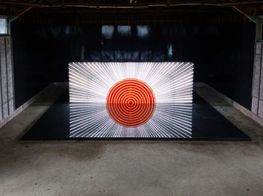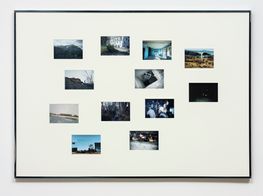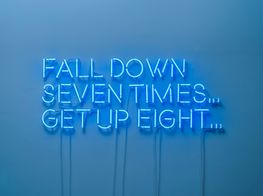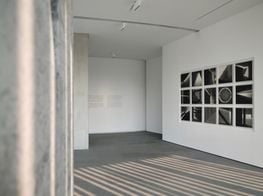Aichi to Okayama: Art in Japan Looks to the Future

Pamela Rosenkranz, Skin Pool (Oromon) (2019) (foreground); John Gerrard, X. laevis (Spacelab) (2017) (background). Exhibition view: If The Snake, Okayama Art Summit (27 September–24 November 2019). Courtesy Okayama Art Summit. Photo: Ola Rindal.
There has been a flurry of triennial and biennial art activity in Japan this year. This report explores some of these shows, concluding with Pierre Huyghe's Okayama Art Summit.
There has been a flurry of triennial and biennial art activity in Japan this year. The Aichi Triennale opened in Nagoya this August, sparking a national debate about the shutting down of a display of formerly censored works—the result of public backlash against a burnt image of Emperor Hirohito and a statue commemorating the women forced into sexual slavery by the Japanese army in World War II.
Following protests by participating artists, the Triennale staged an international forum on freedom of expression on 5 and 6 October, with speakers including 9th Busan Biennale curator Jörg Heiser and 12th Shanghai Biennale curator Cuauhtémoc Medina. Shortly after, news emerged that the display was re-opened.
A two-hour train journey away, the biennial Trans-Kobe exhibition, directed by Sumi Hayashi, opened on 14 September. The show involves a three-day performance in October of Miwa Yanagi's The Wing of the Sun on a barge docked by the Central Wholesale Market, and the staging of End of the Museum—12 Stations by Gregor Schneider until 10 November: site-specific works presented in 12 venues across the city.
Eerie and uncanny interiors abound in Schneider's interventions, some staged in private homes. In one case, a room in someone's house has been transformed into a games arcade (Ecstasy); in another, viewers are sent into the unlit ground floor of a former hostel, its rooms painted all black, with a small torch to light the way (The Dark Side of Dwelling).
Schneider is also participating in the Setouchi Triennale, unfolding across 12 islands of the Seto Inland Sea from April to November. Among them is the Benesse Art Site and Art House Project on Naoshima, where the Tadao Ando-designed Chichu Art Museum presents five of Monet's Water Lilies bathed in natural light; Teshima, home to Teshima Art Museum, which hosts a single artwork by Rei Naito—watery globules moving in a concrete shell designed by Ryue Nishizawa; and Inujima, where the Inujima Seirensho Art Museum is located in a former copper refinery redesigned by architect Hiroshi Sambuichi, housing installations utilising domestic elements by Yukinori Yanagi; works that circle back to Schneider's interiors at Kobe.
Functional and disused buildings host artworks and installations throughout the Triennale, with Schneider's contribution on Ogijima, Unknown Work (2019), consisting of a village house painted all black along with its surroundings. It is an impressive contribution to the Triennale, along with Toshikatsu Endo's Trieb-House on the same island: a roaring column of water gushing down from ceiling to floor in a derelict house.
On Oshima, artists engage directly with the context of this working sanatorium, which was established as a treatment centre for leprosy in 1909. Fuyuki Yamakawa's Strait Songs (2019) documents the artist's swim across the narrow strait connecting Oshima to Aji, which former patients attempted in a bid to escape their enforced confinement, back when being there was not a choice. A screen hangs over a three-dimensional map of this route, with a film of Yamakawa's mesmerising exploit presented from the swimmer's perspective, fully involving the viewer in the task.
The theme of the 2019 Setouchi Triennale, Restoration of the Sea, speaks to the event's intention since its 2010 launch with Fram Kitagawa as general director: 'to revitalise the island communities that once thrived' in the region. Utilising art as a regenerative engine connects with the triennial Okayama Art Summit, which opened its second edition on 27 September in the city of Okayama, one of the departure points from which to explore Setouchi.
Founded by the Ishikawa Foundation, artist Liam Gillick was artistic director of the first Summit in 2016. The show was titled Development, or Kaihatsu in Japanese—an upfront reference to the function of large-scale periodic exhibitions like these to stimulate local economies and increase cultural capital, which Gillick subverted by drawing on time travel and science fiction to frame development as a form of future projection.
Among the participating artists was Pierre Huyghe, who showed his 2014 film Human Mask, in which a monkey wearing a noh mask and wig—the animal actually worked as a waitress in a Tokyo restaurant—is seen alone in an empty restaurant.
The atmosphere is post-apocalyptic; some scenes were captured by flying a drone over the Fukushima nuclear disaster site in Miyagi Prefecture, where the Reborn Art Festival, launched to revive communities left devastated by the earthquake and tsunami of 2011, ran from 3 August to 23 September this year.
The question of how an exhibition might transform or regenerate the terrain on which it operates feeds into Huyghe's approach as artistic director of the 2019 Okayama Art Summit, If The Snake (27 September–24 November 2019). The show is conceived as a 'living entity through which navigate a heterogeneity of chemical, biological and algorithmic processes', with works by 18 artists (including Huyghe) on view in five main venues around the city including Okayama Castle: built in the 16th century, destroyed by World War II bombs in 1945, and re-built in the 1960s with concrete.
The lion's share of Huyghe's exhibition is located at the former Uchisange Elementary School, where Fabien Giraud and Raphaël Siboni filmed The Everted Capital (1971–4936) The Unmanned, Season 2 Episode 2 (2019). Sets used in the work have been left in situ among a series of assemblages, with the film screening in one room.
It tells the story of a group of humans who occupied the school and took an immortal family hostage in the 1970s, as people were evacuated into holding habitats due to environmental decline; generations maintained the kidnap until the end of the 4000s so that the immortals might witness their demise.
Transforming this disused school building into the scene of a crime, or the end of the world, The Everted Capital casts an uncanny shadow over the works located in the grounds outside. On one side of a dirt field, a swimming pool filled with bubbling fleshy pink liquid, Pamela Rosenkranz's Skin Pool (Oromon) (2019), is surrounded by a fence covered with morning glory flowers cultivated through gamma radiation mutation by the Institute of Radiation Breeding at the behest of artist Sean Raspet, who also devised a meal box for the Summit made of ingredients that could survive an environmental apocalypse.
John Gerrard's simulation X. laevis (Spacelab) (2017) looms over this scene: a frog hovering in zero gravity between a pair of gloved hands transmitted via a large screen hanging on the façade of a building across the road.
Huyghe's Not Yet Titled (2019) is a large standing LED screen located on the other end of this dirt field: it transmits images produced by an fMRI scanner that tracked the brain activity of a subject, which a deep neural network visualised using images in its database. The result is a constantly shifting set of projections that teeter between abstraction and figuration—a mirroring of this exhibition's overall scenography, which never quite moves beyond a feeling of emergence.
Just beyond this, in a clearing behind some trees, is a robotic snake with pearlescent skin enclosed within a black ring on an old wrestling platform—the final component in this staging for a post-human neo-Eden. The movements of Pamela Rosenkranz's Healer (Water) (2019) are controlled by algorithms powered by the electric stimuli around it—a fact that connects with Melissa Dubbin & Aaron S. Davidson's Core (For Okayama) (2019) at the Okayama Orient Museum.
Amid a collection of artefacts from the Ancient Near East to Greece is a vitrine containing lodestones recording the earth's magnetic field covered in 135,000 ferrite toroids: magnetic core rings used in early computer memory. Both, the artists note, are fossils of what cannot be seen—an embodiment of deep time, just like the snake.
Intangible and enduring forces are precisely what Huyghe conjures throughout this exhibition—a logic that connects back to the lattice of large-scale art events taking place throughout Japan right now, each producing or instigating positive and negative transformations that are planned, contingent, visible, unseen, and ongoing.
During the opening of Huyghe's exhibition, for example, one Japanese writer found it hard to focus on anything but the issues surrounding the forced removal of ex-censored works at the Aichi Triennale; an episode that made clear what the Japanese cultural scene is up against when it comes to confronting 'toxic new forms of xenophobia and isolationism' that Nick Currie described as 'rising' in his 2016 review of Gillick's Okayama show.
Though the re-opening of the Aichi display is a positive outcome the struggle is ongoing, with the Triennale's public funding now rescinded.
Huyghe's exhibition contains no problematic or political imagery, bar the use of the American flag and Nixon's image in Everted Capital, but that does not mean the show ignores the zeitgeist.
On the 2016 Summit, Cameron Allan McKean wrote in Japan Times that Gillick's exhibition touched on the geography and history of Okayama and the surrounding region, 'but wade[d] out further, into the confusing, complex waters of Earth's precarious future.' In keeping, If The Snake has taken a deep dive into an open sea of speculative futures, coaxing out new worlds.—[O]


